| Posted | Message |
|---|
Paul Bellamy
10/18/2008 6:56:35 PM | While trawling through the USAAF Photo Archives held by NARA I came across a series taken of the 446th Sub Depot at Podington airbase, about 20 miles south of Deenethorpe. This was home to the 92nd Bomb Group, and had the same buildings as Deenethorpe, including the Sub Depot Area.
Sub Depots were responsible for the major servicing and repair of the Group's aircraft, above the daily maintainence of the Crew Chief, but below the divisional Air Depot level.
So, as examples of what the inside of an 8AF Sub Depot looked like (until I find the NARA copies of the 450th SD photos used in the Blue Book) I'll post the series here.
Firstly, the Stores section.
Issuing Desk:
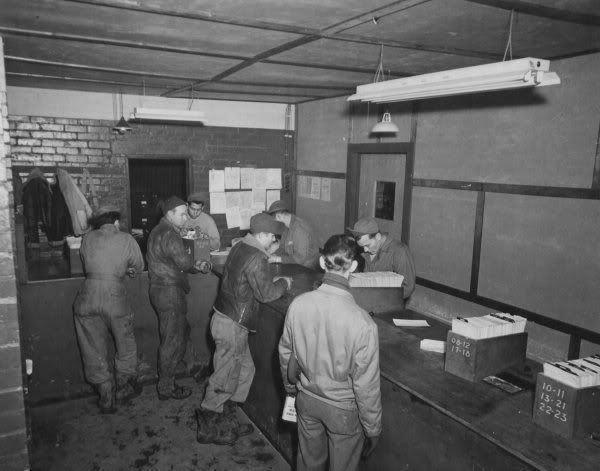
Spares galore:
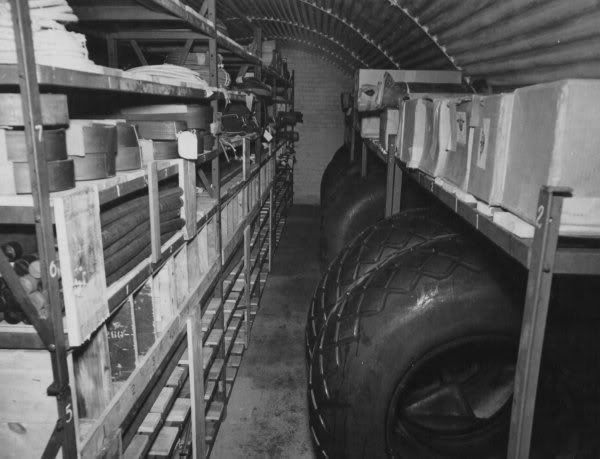
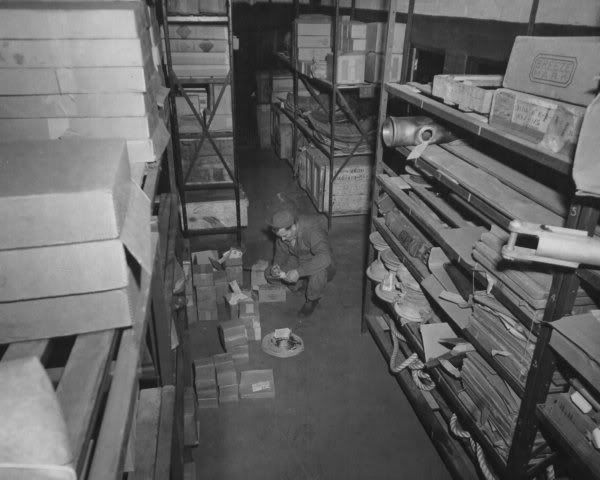
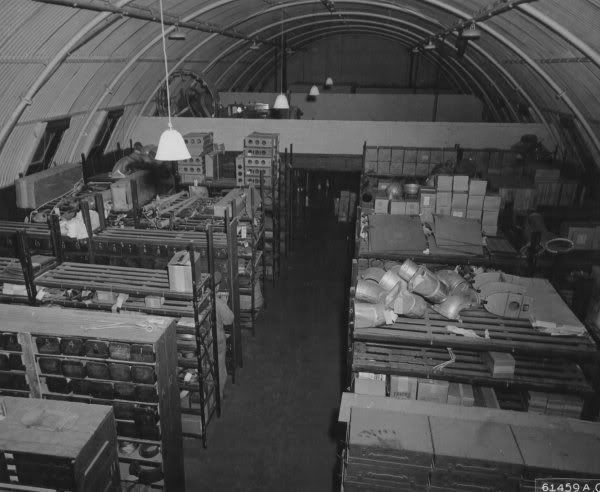
Paul Bellamy

|
Paul Bellamy
10/18/2008 7:00:42 PM | Second half, the maintainence side.
Engine Shop:
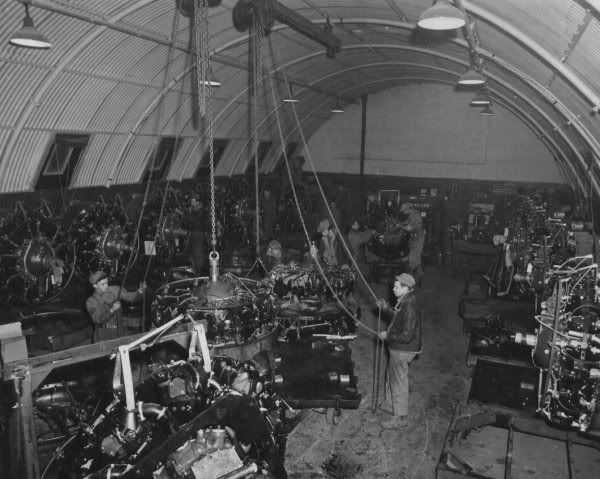 ) )
Machine Shop:
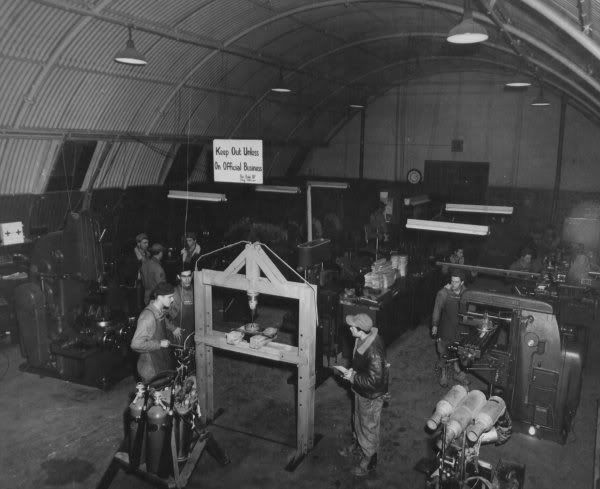
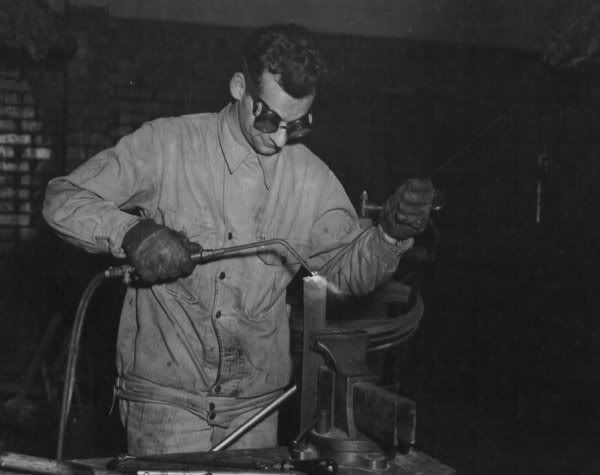
General Workshop, there was one of these beside each of the two hangars:
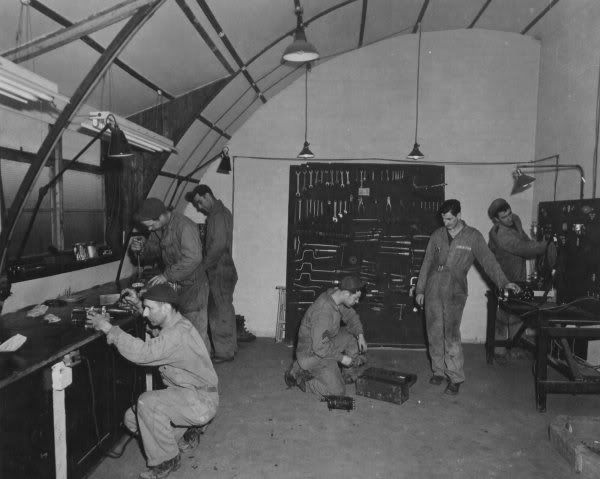
And inside one of the T-2 hangars, another workbench:

As I said before, these photo's weren't taken at Deenethorpe, but the arrangements would have been almost identical.
All the best,
Paul
Paul Bellamy

|
donaldbyers
10/18/2008 7:40:04 PM | Good pic's there Paul and yes they would have been all the same. We now of days would call it the next echelon which as you said the next step up.
Don
Sgt. Donald C. Byers, 613th Bomb Squadron, Togglier, 42-97344 Carrie B II, KIA 08/24/1944.
|
win-win
1/19/2009 12:50:17 PM | Paul:
Quite a story your photos and research contimue to tell. I'm particularly fascinated in this group by the building shell types shown:
- The 'wide' Quonsets, like DP's Bldg.26, having 'pipe' rib-arches and corrugated panels running parallel to the pipes, not only spanning wider floor-widths, but, from the engine shop photo, enablling an overhead hoist (that I would have thought put too high a load (engines) on the roof system - static or dynamic). Impressive.
- The 'low' Qounsets, like the one with the tires' storage, shows what looks like a 'T'-bar rib-arch with corrugated panels running perpendicular to the 'T'-s; and
- The issuing desk building (flat ceiling) looks like it may be a concentional framed building.
I'm also surprised that any workshop or stores spaces had any finished wall or ceiling panels (like the 'Issue Desk' and 'General Workshop' captioned photos show). Insulation?
Again, Truely remarkable research! Thank you, Paul.
Win Bryson
|
Paul Bellamy
3/6/2010 12:48:46 PM | "win-win":
- The 'wide' Quonsets, like DP's Bldg.26, having 'pipe' rib-arches and corrugated panels running parallel to the pipes, not only spanning wider floor-widths, but, from the engine shop photo, enablling an overhead hoist (that I would have thought put too high a load (engines) on the roof system - static or dynamic). Impressive.
These with the tubular frame are Romney Huts. These had a 35' span, with 8' between frames (8' bays).
- The 'low' Qounsets, like the one with the tires' storage, shows what looks like a 'T'-bar rib-arch with corrugated panels running perpendicular to the 'T'-s;
These with the T-rib frames are Nissen Huts, which came in 16', 24' and 30' spans. There was 6' between frames (6' bays).
- The issuing desk building (flat ceiling) looks like it may be a concentional framed building.
This was a flat-roofed brick building that connected the two Romney stores huts. Two 24' span Nissens would be joined to the other sides, the tyre store is likely one of these, the other would contain offices.
I'm also surprised that any workshop or stores spaces had any finished wall or ceiling panels (like the 'Issue Desk' and 'General Workshop' captioned photos show). Insulation?
Most buildings that personnel were expected to work in would have fiberboard insulation panels. The tyre store (probably originally intended to be an RAF fabric store) is unclad as it's just a storeroom.
The "general workshop" is a 24' span Nissen, this can be worked out by counting the number of panels to the top of the ceiling.
All the best,
Paul
Paul Bellamy

|